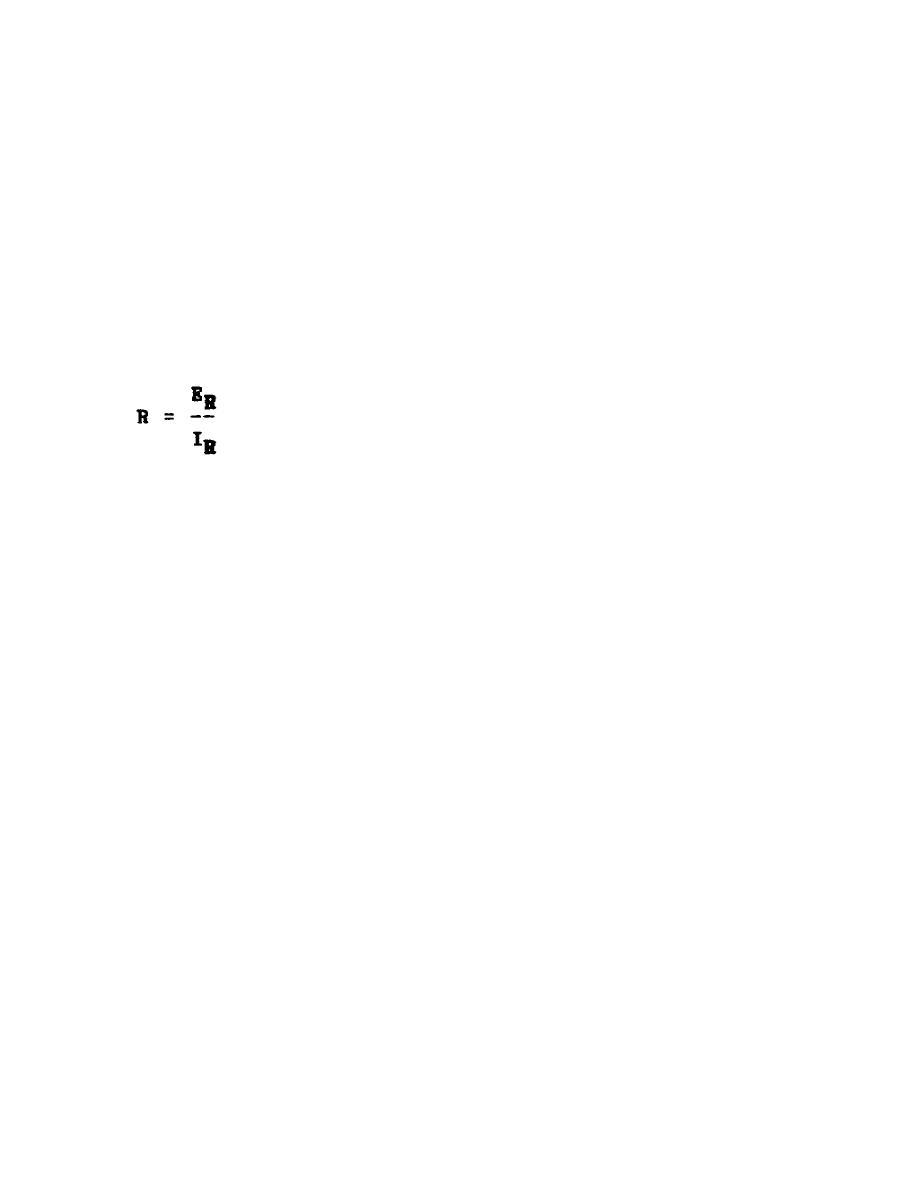
BASIC ELECTRONICS - OD1633 - LESSON 1/TASK 2
in the formula should be noted. The reason for this
is that future circuits may have several currents, and
it will be essential to differentiate between IT and
other currents.
To compute any quantity (E, I, R, or P) associated with a single given
resistor, the values used in the formula must be obtained from that
particular resistor.
For example, to find the value of an unknown
resistance, the voltage across and the current through that particular
resistor must be used.
To find the value of a resistor:
To find the voltage drop across a resistor:
ER = IR x R
d. Kirchhoff's Voltage Law. In 1847, G. R. Kirchhoff extended the use
of Ohm's law by developing a simple concept concerning the voltages
contained in a series circuit loop. Kirchhoff's law states: "The algebraic
sum of the voltage drops in any closed path in a circuit and the
electromotive forces in that path is equal to zero."
To state Kirchhoff's law another way, the voltage drops and voltage sources
in a circuit are equal at any given moment in time. If the voltage sources
are assumed to have one sign (positive or negative) at that instant and the
voltage drops are assumed to have the opposite sign, the result of adding
the voltage sources and voltage drops will be zero.
NOTE
The terms electromotive force and EMF are used in
explaining Kirchhoff's law when used in alternating
current (ac) circuits. In applying Kirchhoff's law to
direct current (dc) circuits, the terms electromotive
force and EMF apply to voltage sources such as
batteries or power supplies.
50




 Previous Page
Previous Page
